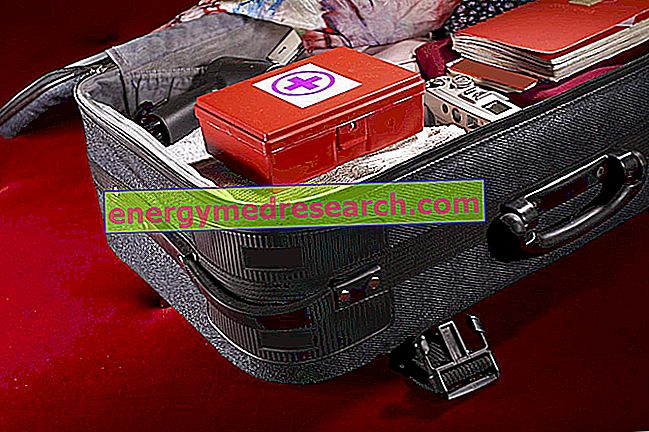
What is Xofigo - radio-223 dichloride used for and what is it used for?
Xofigo is a radiopharmaceutical (a medicine containing a radioactive substance) that contains the active ingredient radio-223 dichloride. Xofigo is indicated for the treatment of adult men with prostate cancer (a gland in the male reproductive system). Xofigo is used when medical or surgical castration (interruption of production of male hormones in the body, obtained by drug therapy or surgery) has not worked and when the cancer has spread to the bones, where it causes symptoms (including pain), but not to other internal organs.
How is Xofigo - radio-223 dichloride used?
Xofigo can only be obtained with a prescription and should only be used and administered by personnel authorized to handle radioactive medicinal products and after the patient has been evaluated by a qualified doctor. Xofigo is available as a solution for injection. The dose of Xofigo is calculated based on the patient's body weight in order to provide a specific dose of radioactivity (50 kBq per kg of body weight; the kilobecquerel is the unit of measurement of a radionuclide activity). The medicine is given by slow intravenous injection, generally up to 1 minute. The injections are repeated every 4 weeks for a total of 6 injections. For more information, see the package leaflet.
How does Xofigo - radio-223 dichloride work?
The active ingredient in Xofigo, radio-223, emits short-range radiation, called alpha particles. Radium is managed in the body like the calcium normally found in bones. It accumulates in the bone tissues where the tumor has spread and where the alpha particles destroy the surrounding cancer cells, helping to control the symptoms of carcinoma.
What benefit has Xofigo - radio-223 dichloride shown during the studies?
Xofigo has been compared with placebo (a substance without effects on the body) as an additional treatment compared to standard therapy in a main study involving 921 men with prostate cancer that had spread to the bones and in which the suppression of male hormones by drug therapy or surgery had not been successful. Patients received up to 6 injections, at intervals of 1 month from each other, and were monitored for up to 3 years after the first injection. The main measure of effectiveness was how long the patients survived. The median survival in patients treated with Xofigo was 14.9 months compared with 11.3 months in the placebo group. In the subjects treated with Xofigo, more time elapsed before the signs and symptoms of progressive disease reappeared, including fractures and bone pain.
What is the risk associated with Xofigo - radio-223 dichloride?
The most common side effects with Xofigo (which may affect more than 1 in 10 people) are diarrhea, nausea, vomiting and thrombocytopenia (decreased blood platelet count). The most serious side effects were thrombocytopenia and neutropenia (decrease in the number of neutrophils, a type of white blood cells responsible for fighting infections). For the full list of all side effects reported with Xofigo, see the package leaflet.
Why has Xofigo - radio-223 dichloride been approved?
The Agency's Committee for Medicinal Products for Human Use (CHMP) decided that Xofigo's benefits are greater than its risks and recommended that it be approved for use in the EU. Xofigo had shown a clinically significant benefit in terms of prolonging patients' lives and delaying the onset of signs and symptoms of progressive disease. The main short-term side effects of the medicine are reversible and have been considered manageable. The radiations emitted by Xofigo have a shorter range than those currently available on the market. This can help limit the damage created to adjacent healthy tissues.
What measures are being taken to ensure the safe and effective use of Xofigo - radio-223 dichloride?
A risk management plan has been developed to ensure that Xofigo is used as safely as possible. Based on this plan, safety information has been included in the summary of product characteristics and the package leaflet for Xofigo, including the appropriate precautions to be followed by healthcare professionals and patients.
More information on Xofigo - radio-223 dichloride
On 13 November 2013, the European Commission issued a marketing authorization for Xofigo, valid throughout the European Union. For more information on Xofigo therapy, read the package leaflet (also part of the EPAR) or contact your doctor or pharmacist. Last update of this summary: 10-2013.



